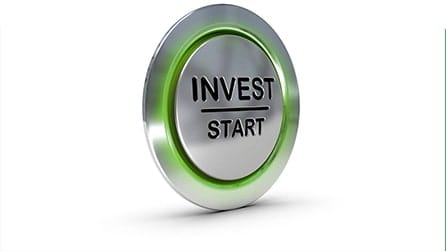
Investing Tips For Teens
By being young you may not have much money to invest, yet there are many ways for you to start your investment journey. The earlier you start the better – the more time your investments have to grow and compound, which could lead to much bigger gains down the road.
You’re here because you’re interested in investing and wondering how it all works. Investing sounds complicated, but with the right information, it’s possible for you to start investing as a teenager.
We’ve come up with some investing tips for teens to get you started and get an understanding of how it works.
What is True About Investing?
With so much information available to do with investing, it’s hard to figure out what’s real. From get rich quick videos to advice on speculating, filtering through can be difficult. The following we know to be true about investing.
You Don’t Become a Successful Investor Overnight
The wise and savvy investors don’t make their money in one day. They make it by investing steadily and consistently over a long period of time. For a great example, learn about Warren Buffett.
Investing Teaches Financial Literacy
Many adults struggle when making decisions about their finances. Why? Because they weren’t properly taught financial literacy. For example, many adults have little understanding of:
- How financing works
- How credit works
- How poor financial decisions could impact them for years to come
For many, personal finances are a source of stress and anxiety. To avoid this, becoming financially literate and learning about investing eases the pressure. Learning how to invest as a teen may help you feel more confident and less anxious about money matters later on in your life.
Compound Interest is Good for Teens – Really Good
Compound interest is your money’s power to start earning its own money. The earlier you start investing, the longer your money will be able to do that for you: show up early to the race and expect to be in it for the long haul. Compound interest is the snowball effect of money – the more you have, the more that it can grow.
Here’s an example :
Let’s say you’re 15 and you start investing $150 per month into a brokerage account that has a 10% annual return. When you reach the age of 60, you’ll have $1.3 million saved. However, if you start saving at 35, you’ll only have $180,000 by the time you’re 60. Compound interest works in your favour when you’re in your teens.
Your Parents Can Open your Brokerage Account Before You’re 18
A brokerage account allows you to trade stocks. If you’ve already researched investing as a teen, you may know that you can’t open a brokerage account before you’re 18. However, your parents can do it for you.
In America this account is called a custodian account, and in Canada it’s called an in-trust account. Your parent can open and deal with the money on your behalf, and when you’re 18 or 21, the money goes to you. Talk to your parents about this – your age shouldn’t prevent you from making healthy financial decisions. That is if you’re planning to make healthy financial decisions.
What is the Relationship Between Risk and Reward in Investing
There’s a relationship between risk and reward. Yes, that seems like some absurd finance jargon, but really it’s easy to understand. Let’s dive in.
When investing, there’s always a risk. The simplest risk when placing money somewhere is inflation – whenever you put your money in a bank you risk it becoming worthless when inflation occurs if you’re getting an interest rate below the rate of inflation.
There are other ways of investing (which we’ll review later on) with different levels of rewards. However, the potential for reward is almost systematically linked with the level of risk. This can be measured by the Risk/Reward ratio (RR). As a rule of thumb, the more rewards you could get, the higher the risk involved. When you invest, you risk:
- Losing money
- Falling short of your financial goals
- Missing out on better opportunities
- Betting on the wrong opportunities
There’s always a relationship between risk and reward in investing. It’s a question of finding the balance between the two and staying within your financial comfort zone.
What Should Teens Invest In

There are so many different investments to choose from, and so many different levels of risk to navigate. You might be feeling overwhelmed, but remember, you can stick to the safest bet and build from there on out. You should always check with a parent/guardian and/or an advisor prior to making any investments. Here are some common investments teens can make:
High-Yield & High Interest Savings Account
High-yield savings account (HYSA) or high-interest savings account (HISA) are the most common way teens start investing. They offer a higher interest rate than a standard account. There’s no risk in putting your money into an HYSA or HISA because they are insured by the government.
Guaranteed Investment Certificate (GIC)
In Canada, there’s something called a guaranteed investment certificate (GIC). Canadian banks and trust companies offer people to deposit money for a fixed length of time and benefit from great interest rates. When you buy a GIC, you’re basically lending the bank money and getting paid good interest in return. In the U.S. the equivalent is called a Certificate of Deposit, or CD.
Stocks
A stock is a share in a public corporation. It is also called equity. When you buy stock in a company, it means that you’re now a shareholder and you own a part of the company. Investors can earn money from the company doing well, as its value increases.
Investing in stocks or bonds is a popular form of investment among older people. However, it’s a challenging undertaking for teens. Investing in a stock means that you need to read about the company, learn about its financial condition and invest wisely.
Stocks are known to be volatile, which means they have a high risk with their reward. You can try your hand at trading by opening a practice virtual trading account—also known as paper trading.
Bonds
When you purchase bonds, you’re lending money to a company or government. The bond issuer will give you interest payments. Purchasing bonds is a way to make stable investments.
A Business
There are many low-barrier businesses a teen can start. Again, you’ll need the support of your parents as there are legal and tax implications, but the cost of starting a business doesn’t need to be a hindrance. From starting a small local service business to an online business, this is something that you are not too young to start considering and you may already have the skills for it.
How to Open an Investment Account as a Teen
If you’re under 18, the best way for you to start investing is by opening a custodial or in-trust account. The bottom line is that the earlier you start investing, the more opportunity you have to build wealth at a young age, prepare for the future, and gain the financial literacy you need to reach your goals in the future.
Summary
Investing is not easy and can’t be perfected overnight. Proper investing takes, time, research, and a little bit of risk depending on your goals. Investing is also a skill that you should start to learn about and even practice, as this could be the difference in your lifelong financial situation.
Don’t take investing lightly and start to learn now, as the sooner you begin to invest the more you will benefit in the long run. I hope these investing tips for teens will help you get a head start on your investing.
By: Robert | October 12, 2021 |





